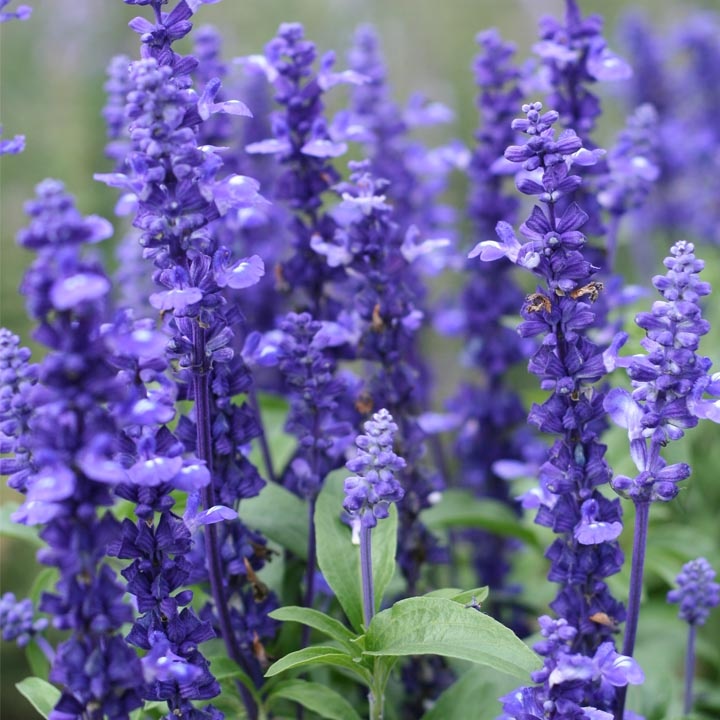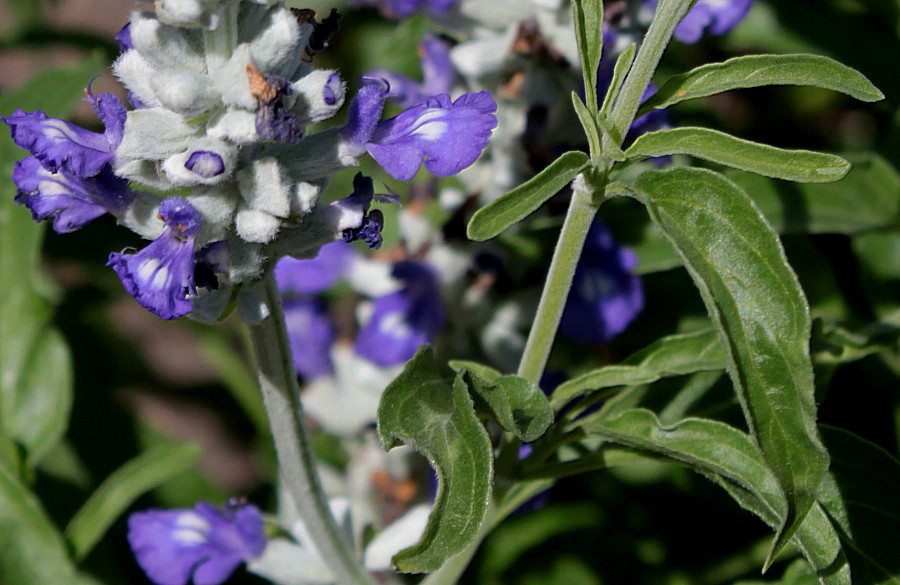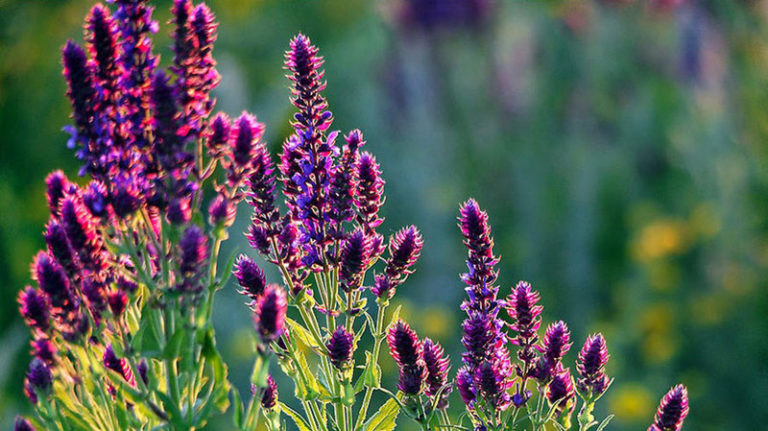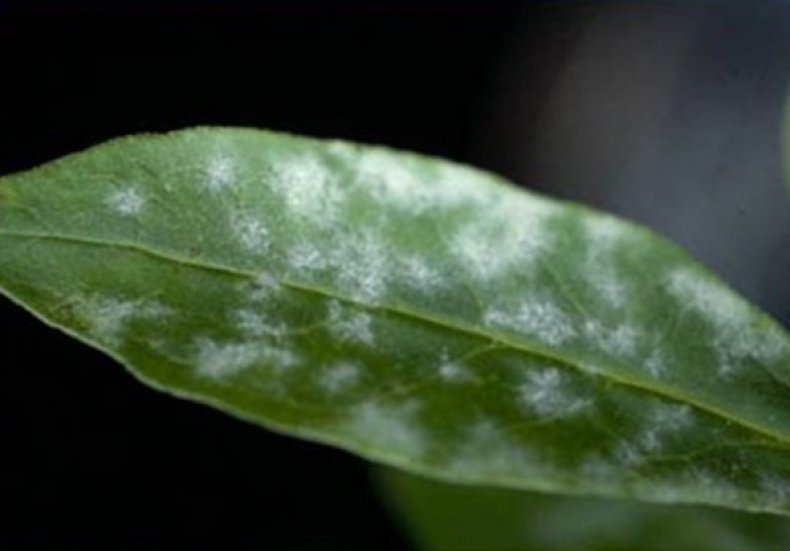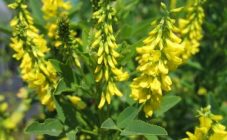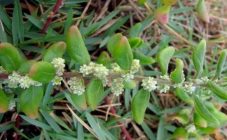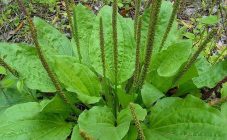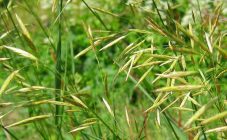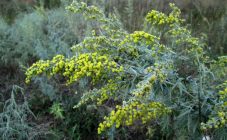Content:
Sage is one of the oldest herbs used in herbal medicine and is considered a source of longevity. The spice is used in cooking, and the decorative qualities of the shrub are used in landscape design.
Description of culture
The homeland of the aromatic herb is the Mediterranean, where it grows in a warm climate on the mountain slopes. In Russia, the medicinal species does not occur in the wild. Basically, the plant is grown by humans independently in households or on an industrial scale to collect raw materials.
Sage is also called salvia and has about 900 different species.
Sage grows in annual, biennial, or perennial crops. The life form is a shrub that has many stems. The sage shoot is strewn with blue or purple flowers.
The stems of the plant are long, erect, depending on the variety, can be purple or red-brown in color. Smooth stems have a lower woody part, and the upper one is grassy, tetrahedral in shape. The length of the stems is from 30 cm to 1 m, in breeding forms more than a meter is found.
The leaves are fleecy, wrinkled, gray-green in color, of two types: stem and bracts. Sage leaves contain essential oil glands - sources of essential oil.
The flowers are bell-shaped, located at the top of the stem, the dominant colors are blue and purple. The selection forms are bred in lilac, red and white shades. Inflorescences are collected in panicles or spikelets.
Lignified root, branched.
The fruit consists of four connected nuts, unevenly rounded, dark brown in color. Seeds ripen at the end of summer, germination lasts up to 3 years.
Sage differs from other plants of the Lamiaceae family by the presence of two stamens, instead of four. Of all types of sage, the leaves of the medicinal are more essential oil.
Types and varieties
Some of the common types of sage:
- Medicinal is the most famous member of the family, which is used in medicine and cooking. There are many hybrids of the species. The flowers are purple, the shades of the leaves differ in a variety of colors, there are specimens with pink, reddish, lilac, white-cream and silvery foliage, some have bright golden-white spots.
- The nutmeg species is also prized for its essential oil content. The variety has a rich taste and smell, large light purple inflorescences. Clary sage is used not only in pharmacology, but also for brewing fragrant tea and bouquets.
- Dubravny is a perennial with fragrant leaves and dark purple flowers. A hardy and durable melliferous plant with vigorous growth. The oak species is not used for medical purposes.
- Flourish is an unpretentious perennial shrub, some varieties look dull, because they have parts of a pale flour color.
- Voznesensky 24 is a plant that reaches 2 m in height, with large dark green leaves that are distinguished by a heart-shaped shape.
Sage-like herb for use in landscaping:
- hyssop;
- catnip;
- savory.
Growing features
For the successful growth of sage, sunny areas are chosen, with good water permeability, lightness and soil fertility. Spicy shrubs are also grown in garden pots and flowerpots.
Most types of ornamental and medicinal herbs are drought-resistant and do not require constant watering.
Seeds can be left untreated before planting and sown in open ground in May or before winter. It is recommended not to plant sage after its own Yasnotkov family, which includes mint, thyme, motherwort.
To preserve the variety, sage varieties are planted far from each other due to the ability of plants to cross-pollinate.
In a sunny place with suitable soil, sage can grow for up to 10 years in a row, with the duration of growth, its resistance to cold increases.
The benefits of the plant
Sage leaves contain essential oils, tannins, vitamin P, phytoncides, which have an anti-inflammatory and disinfectant effect on the human body.
Sage Herb Usage Instructions:
- Preparation of infusion: 3 tbsp. l. dried leaves are poured with 200 ml of hot water, heated for 15 minutes. in a water bath. Cool at room temperature for 45 minutes. The mass is filtered. Boiled water is added to the remaining infusion to a volume of 200 ml. Use a warm product to gargle and treat dental inflammation.
- A sage drink is brewed using black or green tea, in a 1: 3 ratio. One part of chamomile can also be added to the tea. The mixture is poured into a teapot, half a liter in volume, poured with boiling water and allowed to brew for 10 minutes. You can add honey or sugar to tea. It is taken internally for no more than two weeks. Such tea can help during colds, strengthening the protective functions of the body. Use fresh tea throughout the day.
- The broth is prepared by pouring boiling water over the dry raw materials and infusing for half an hour. The ingredients are used in a dosage: 1 tsp. in a glass of boiling water. Before use, filter the broth and drink a quarter of a glass three times a day. Decoctions help with digestive disorders, respiratory diseases and nervous conditions.
Phytoestrogens isolated from plant parts are used to relieve hot flashes and other unpleasant effects of menopause in women.
Sage is part of such herbal preparations as:
- gastric;
- chest;
- bronchial;
- for the treatment of the genitourinary system;
- renal.
The spice has diuretic properties, helps to remove excess fluid from the body, but with prolonged use, more than three months, it can contribute to the accumulation of substances that adversely affect the functioning of the kidneys.
Sage essential oils can increase blood pressure, and are also a contraindication for use during pregnancy and breastfeeding, and treating children.
Diseases and pests
Due to its spicy aroma, the plant does not attract pests and is considered an insecticide.
A shaded area or waterlogged soil can cause various rot diseases and the appearance of slugs.
Harvesting grass
For medicinal purposes, the leaves are collected before flowering and the tops of the inflorescences.On an industrial scale, all parts of the plant are used, cutting off the stem at the root. You can collect raw materials throughout the growing season.
The raw material dries naturally in the fresh air or in well-ventilated rooms. The bunches are tied vertically, and the leaves are laid out on baking sheets.
Dried sage should be kept in hermetically sealed containers so that nutrients cannot escape. The collection period is 2 years.
The beneficial properties of sage, used since ancient times, are still relevant. Breeding forms have expanded towards even greater decorativeness of the shrub. The aromas of flowers have acquired notes of mint, anise, lavender and melon.
